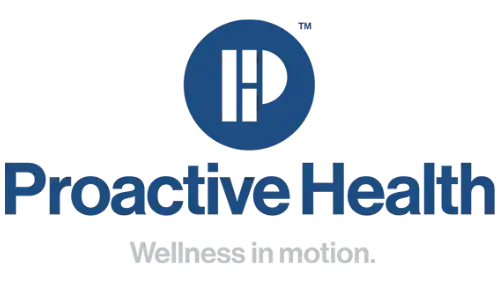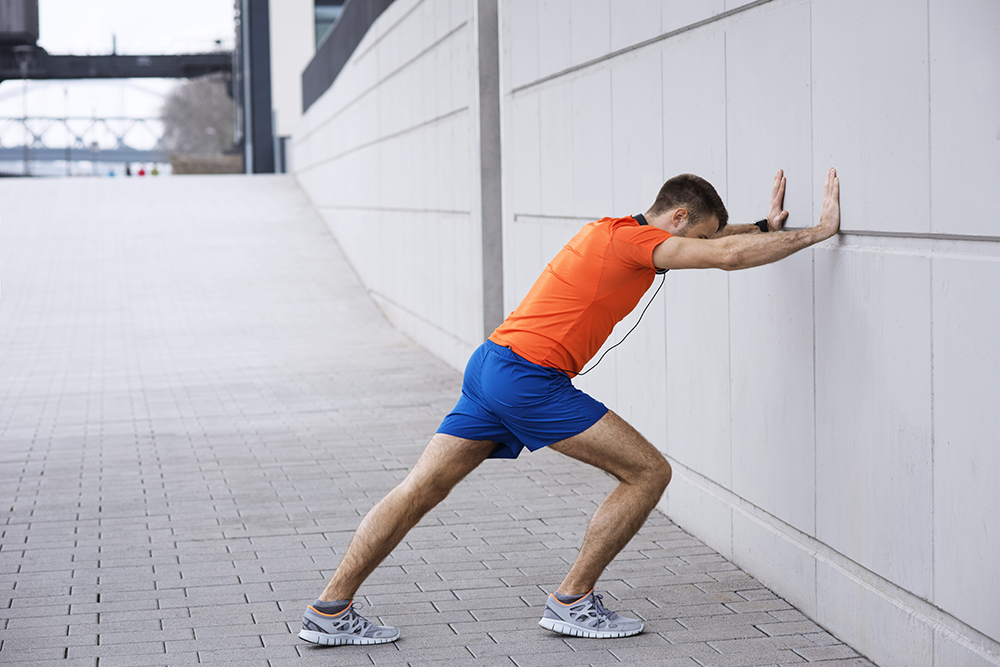If your calves are constantly tight, your ankles feel stiff, or you’ve dealt with nagging Achilles pain, you’ve probably been told to “just stretch it out.” So you lean against a wall, push your heel down, and hope that does the trick. It might feel better for a minute—but the tightness always seems to come back, doesn’t it?
Here’s the part most people miss: static stretching alone won’t cut it, especially if you’re active. Whether you’re lifting, running, cycling, or just trying to feel better on your feet, what you likely need is a dynamic calf stretch—something that not only loosens the muscle but prepares it for movement.
At Proactive Health, we include dynamic calf drills in tons of treatment plans because the calves play a more foundational role in movement than people realize. Let’s break down what they do, why it matters, and how to stretch them the right way to actually make progress.
Why Your Calves Are More Important Than You Think
The calf is more than just one muscle—it’s a muscle duo that handles a lot behind the scenes. Here’s the breakdown:
- Gastrocnemius: the larger muscle you can see, crossing both the knee and the ankle.
- Soleus: the deeper muscle beneath it that only crosses the ankle joint.
Together, they help absorb impact, stabilize your body, and keep your gait smooth and efficient. They also control how far your ankle can bend—critical for squats, running, and everyday motion.
When this system gets tight or restricted, it can trigger a ripple effect throughout your body. Think about it:
- Limited ankle dorsiflexion
- Compromised form in squats or lunges
- Reduced shock absorption when running
- Strain on knees, hips, and even your lower back
So, yes, it’s a calf issue—but it’s also a chain reaction waiting to happen if left unaddressed.
Static vs. Dynamic: Why It Matters
Most people default to static stretching—holding a position, like a runner’s stretch, for 20-30 seconds. That’s not wrong. It has its place, especially after workouts or during cool-downs.
But if you want to prep your body to move, or unlock lasting range of motion, static work often falls short.
Dynamic calf stretching means moving the muscle actively through its range. Think slow, controlled movements that mimic real-life or sport-specific motion. That’s where the magic happens. Benefits include:
- Increased ankle mobility
- Enhanced neuromuscular control
- Activation of surrounding muscle groups
- Better prep for physical activity
- Reduced injury risk
The key is movement with intention—waking the calves up instead of just pulling on them.
Try This: The Dynamic Knee-Over-Toe Calf Stretch
This is a go-to drill we coach constantly at Proactive Health. It’s simple, effective, and can be done almost anywhere.
How to Do It:
Start Position:
- Get into a split stance or half-kneeling position.
- Keep the front foot flat on the floor with toes facing forward.
Drive Knee Over Toes:
- Slowly shift your body forward, pushing the front knee beyond your toes.
- Keep the heel planted—you should feel the stretch in your calf and Achilles.
Return and Repeat:
- Return to your start position in a controlled manner.
- Aim for 10–15 slow reps per side.
Keep In Mind:
- Maintain a stable arch in your foot—don’t let it collapse.
- Don’t rush—slow, intentional reps are more effective.
- Want more challenge? Elevate the front foot slightly on a plate or wedge.
Stretch Upgraded: Progressions for Next-Level Mobility
Once you’ve nailed the basic knee-over-toe version, here are a few ways to spice it up:
1. Wall-Assisted Knee Drives
Use a wall for support. Drive the knee forward while keeping your heel down. Great for active ankle range.
2. Weighted Knee Drives
Place a plate or kettlebell on your knee during the half-kneeling stretch to add gentle load. Just go slow.
3. Dynamic Toe Rockers
Stand and rock from heel to toe in a smooth rhythm. It wakes up your calves and challenges balance.
4. Eccentric Heel Drops
Stand on a step, raise both heels, and then slowly lower one heel at a time. Excellent for building control and strength.
When Should You Use These Stretches?
Dynamic calf work is super versatile and doesn’t take long to be effective. Best times to add it in:
- Pre-run or sprint session
- Before lifting, especially for squats and cleans
- Warming up before a bike ride
- Recovery days as part of a mobility flow
- Targeted prep if you’ve had ankle, foot, or Achilles issues in the past
Even just a few minutes per session can yield better joint function and muscle activation over time.
Why Proactive Health Focuses on Calf Mobility
You might not walk into our clinic complaining about your calves—but trust us, the calves are often silently involved in bigger issues.
We’ve seen time and time again: restricted ankle mobility can be the hidden culprit behind chronic injuries or poor performance.
That’s why during evaluations, we always look at:
- Ankle range of motion
- Foot mechanics and stability
- Calf tension and flexibility
When we find imbalances, we don’t just stretch—we fix the system. That might include:
- Dry needling for deep muscle release
- Dynamic mobility training
- Strength programming to lock in gains
The end goal? Better movement, fewer setbacks, and a body that feels good to live in.
Do You Need Calf Mobility Work?
You don’t have to be in pain to benefit—but here are a few signs it might be time to get serious about your calves:
- You struggle to keep heels down in squats or lunges
- Your knees don’t move forward easily during movement
- You feel tight or sore around your Achilles regularly
- Your calves are always rock-hard, no matter how much you stretch
- You’ve dealt with plantar fasciitis or ankle instability
- You’re prone to recurring shin splints or foot pain
These aren’t just isolated symptoms. They’re signs your movement chain needs a tune-up.
Ready to Move Better? We’ve Got You.
Tired of rolling out your calves or stretching without results? Let’s fix it—for real.
At Proactive Health, we don’t throw generic plans at you. We test, assess, and build a strategy that makes sense for your body. That includes mobility drills, hands-on treatment, and strength work to keep your progress lasting.
Book your evaluation today and take the first step toward smoother movement, fewer injuries, and stronger performance.



